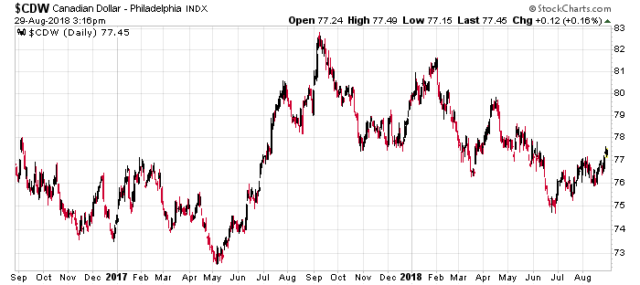There are quite a few financial websites out there dedicated towards investing in dividend-bearing securities.
Some give the impression that it is nearly guaranteed to produce returns superior to the overall market.
In addition, a lot of them convey that the production of income through dividends is somehow “safer” than investing in major index ETFs.
In general, I do not have issues with dividend-bearing equities. In a lot of instances companies do not have proper places to re-allocate capital and giving it to shareholders is the right decision – especially if their stock price is high and the cost of their debt is low.
Where I have issues with dividend investing is in companies that have suspicious cash flow profiles or give cause to believe that their earnings profiles are going to be less than what is implied by their market pricing.
I’ll give an explicit example. Cineplex (TSX: CGX) I have written about in the past. Specifically in a May 2014 article (when the stock was trading at around $41), I was puzzled why the stock was doing so well given the “dinosaur” aspect of their business.
A lot of people though will take a look at their current 5.4% dividend yield (currently trading at $32/share) and blindly buy on the basis of that number alone. What will not be asked is whether this can be sustained or whether the business is fundamentally sound to generate sufficient cash flows in the future. Maybe it will, but there is an awful amount of risk for that 5.4%, much more than I could justify for my own (cowardly) risk profile. The 5.4% doesn’t compensate for the risk of future potential losses.
Another example that I have not written about in the past is Laurentian Bank (TSX: LB). This got on my radar back in June when their CMHC securitization issues hit the headlines. After doing some deep-dive research, while I believe the financial institution in general will continue to generate cash, I determined that better prices in the future could probably be had. Their last quarterly report was a prime example of mediocrity that one would expect from a centuries-old financial institution and their stock got hit 5% on the day after the report. Dividend investors were screaming “buy, buy, buy!”, looking at the juicy 6% yield and apparent value (then trading around 17% under book value). How can you lose? Today, it is down another 5% from the day after they reported earnings. It would take a year of dividends and a flat stock price to “catch up” to even.
The real test of the veracity of dividend investors is what happens when the capital value of their investments go south, and I am not talking 5-10% – when they start seeing 20-30% capital losses across their portfolios, will these dividends be nearly as important?
Just note this is not a prediction on the future outcome of CGX or LB or the market in general. It is simply a commentary that dividend investing is not risk-free magic and it requires just as much financial rigour as other types of investing. For common share investments, I’m agnostic towards companies that either give out or do not give out dividends or distributions. It factors little in my investment decision-making. I’m much more concerned about what management does with the capital they have.

